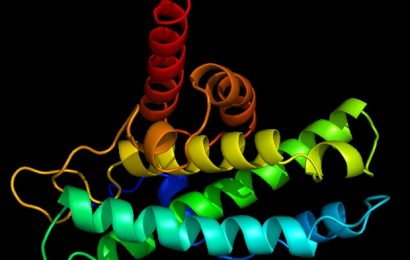
Foodborne pathogens are very common and usually benign, but certain virulent strains of pathogens can result in severe disease and even death. Distinguishing specific strains of pathogens can help scientists better understand them and develop biomarkers to help detect them in patients, expediting diagnosis and treatment.
University at Buffalo researchers have now completed the genomic analysis of a specific strain of Shiga-toxin E. coli (STEC) that can cause severe disease outbreaks and is increasingly common. The research could play a role in expanding the understanding of STEC infections and, potentially, in developing vaccines against them.
According to the Centers for Disease Control and Prevention, STEC are estimated to cause more than 265,000 infections per year in the U.S., and are associated with more than 3,600 hospitalizations and approximately 30 deaths.
Published in BMC Genomics last month, the paper describes the genomic analysis completed on a unique STEC strain isolated from an otherwise healthy 2 ½-year-old child living in Davidson County, Tennessee. The pathogen caused severe illness, including hemolytic uremic syndrome, a condition that destroys red blood cells, lowers platelets and blocks blood vessels in kidneys, resulting in anemia and kidney damage.
The child survived but was hospitalized for a month and sustained severe complications affecting multiple organ systems, including her lungs, heart, kidney, brain, circulatory system and gastrointestinal tract.
A growing public health concern
The Shiga-toxin producing E. coli she was infected with is a non-0157 STEC. While the pathogens classified as 0157 STEC infections generally are more common and result in more severe disease, the number of emerging, non-0157 STEC pathogens has been on the increase. Some lead to severe disease, creating a growing public health concern, according to the UB researchers.
The paper states that there are more than 400 of these non-0157 STEC strains, and more than a quarter are reported to cause gastrointestinal disease, often presenting first as bloody diarrhea with hemolytic uremic syndrome and if untreated, in rare cases, death.
The specific pathogen the child was infected with was a STEC 0145:H25. “Since genomic studies on emerging non-0157 STEC are limited, our studies are significant because they reveal the genetic makeup of emergent STEC 0145:H25 in comparison with other STEC strains,” said Oscar G. Gómez-Duarte, MD, corresponding author on the paper, associate professor and chief of the Division of Pediatric Infectious Diseases in the Department of Pediatrics in the Jacobs School of Medicine and Biomedical Sciences at UB and a pediatrician with UBMD Pediatrics.
“The findings reveal how this emerging STEC causes severe disease and that it may be as virulent, or even more virulent, than more common STEC strains, leading to severe and even deadly disease in susceptible hosts,” he said. “It also provides information on how this potentially preventable infection continues to affect vulnerable individuals.”
Virulence genes
A key finding of the study, he said, was that this 0145:H25 serotype leads to particularly severe infection. Moreover, in addition to carrying virulence genes present in 0157 STEC, it has additional genes and new potential virulence genes as compared to other non-0157 strains that have been studied. “These findings deserve further analysis to understand the pathogenesis of these emergent STEC infections,” said Gómez-Duarte.
The analysis was conducted through a collaboration between the Department of Pediatrics researchers and colleagues at UB’s New York State Center of Excellence in Bioinformatics and Life Sciences, whose expertise in bioinformatics and whole genome sequencing analysis allowed the team to uncover the genetic information critical to understanding where these strains are derived from and how they may be traced to unique reservoirs, such as contaminated food products or infected livestock.
Source: Read Full Article


